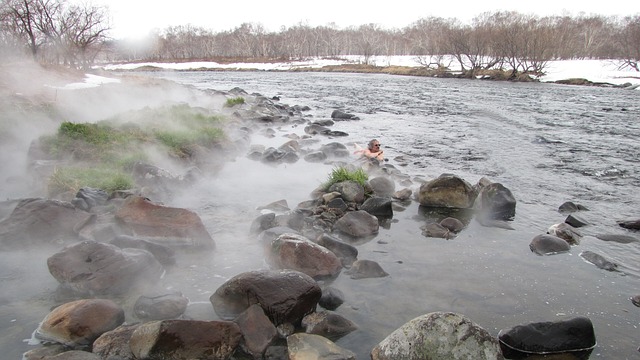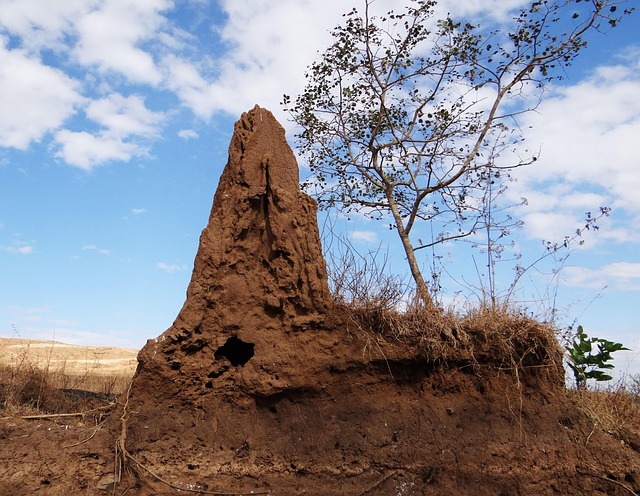Integrated Termite Treatment (ITT) offers an eco-friendly, effective approach to termite control, combining chemical and non-chemical solutions tailored to each property's unique needs. Unlike traditional methods relying on toxic chemicals and extensive digging, ITT minimizes environmental impact, disrupts reinfestation, and provides long-lasting protection. This holistic strategy includes biological controls, habitat modification, regular monitoring, and proactive maintenance, making it a superior choice for eco-conscious homeowners and property managers seeking durable termite treatment solutions.
“Discover the revolutionary approach to termite control with Integrated Termite Treatment (ITT), a holistic solution reshaping pest management. This comprehensive guide explores the shift from traditional methods, delving into ITT’s benefits and multi-faceted components. Learn how integrated systems offer sustained protection, addressing termite behavior and habitat. From implementation strategies for property owners to inspiring case studies, this article provides valuable insights for effective, long-lasting termite treatment. Uncover the future of pest management as emerging technologies further enhance ITT’s capabilities.”
Understanding Integrated Termite Treatment: A Holistic Approach

Integrated Termite Treatment is a comprehensive and holistic approach that goes beyond conventional methods. It involves a strategic combination of various techniques, including chemical and non-chemical solutions, to manage and eradicate termite infestations effectively. This method recognizes that termites thrive in complex ecosystems, and by addressing multiple aspects of their habitat and behavior, it offers a more sustainable and long-lasting solution.
In this approach, professionals carefully assess the specific needs of each property, considering factors such as soil conditions, building structure, and nearby vegetation. This personalized strategy allows for the implementation of targeted treatments, reducing potential environmental impact and minimizing the use of chemicals. By integrating these diverse techniques, Integrated Termite Treatment provides a robust defense against termites, ensuring structures remain protected over time.
The Traditional Methods and Their Limitations

Traditional termite treatment often involves toxic chemicals, requiring extensive digging and application around homes and structures. While effective in the short term, this method has several limitations. Chemical barriers can degrade over time, losing their protective properties, and fail to address existing infestations. Moreover, these chemicals may pose risks to pets, children, and local ecosystems if not applied properly.
The limited scope of traditional methods means they don’t prevent termites from accessing hard-to-reach areas. Termites are known for their intricate tunnel systems and ability to find new sources of wood, making chemical barriers less than ideal solutions for complete termite treatment. Integrated termite treatment offers a more comprehensive approach by combining multiple tactics, including biological control, habitat modification, and targeted chemical applications, to provide long-lasting protection for structures.
Benefits of an Integrated System for Termite Control

Integrated Termite Treatment offers a comprehensive and effective solution for managing termite infestations, setting it apart from traditional methods. By combining multiple control strategies, this system provides a more sustainable and environmentally friendly approach to termite management. Instead of relying solely on chemical pesticides, which can have adverse effects on ecosystems and human health, integrated systems employ a diverse range of tactics.
These include biological controls like introducing natural predators or parasites, structural modifications to deter termites, and targeted applications of limited-use chemicals. This holistic method not only effectively eliminates existing termite colonies but also disrupts their ability to spread and reinfest treated areas. As a result, it offers long-lasting protection, reduces environmental impact, and ensures the safety of nearby water sources and non-target organisms, making it an ideal choice for Termite Treatment.
Components of an Effective Integrated Termite Management Program

An effective integrated termite management program involves a multi-faceted approach that combines multiple strategies for long-term protection against termites. Firstly, it entails a thorough inspection and assessment of your property to identify potential entry points and active termite infestations. This includes examining structural elements, soil conditions, and nearby vegetation, as these factors can significantly influence termite activity. Once identified, targeted treatments such as baits, chemicals, or biological controls are deployed based on the specific needs of the property.
Regular monitoring is another critical component. By setting up monitoring stations and conducting periodic inspections, you can detect any early signs of termite activity. This proactive approach allows for swift intervention before infestations escalate. Additionally, maintaining a buffer zone around your property by removing debris, trimming trees, and ensuring proper drainage can create an environment less conducive to termites, reinforcing the overall effectiveness of the treatment.
Implementation Strategies for Property Owners

Implementing an effective termite treatment strategy as a property owner requires a multi-step approach. Start by conducting regular inspections, especially in areas prone to moisture buildup and wood contact, as these are ideal conditions for termites. Use tools like probes or moisture meters to detect any signs of infestation or potential entry points. Once identified, seal any cracks, gaps, or openings using appropriate materials to deter termite access.
Next, consider professional treatments such as baiting systems or liquid applications. Bait stations strategically placed around the perimeter offer a subtle yet powerful method to monitor and control termite populations. Liquid treatments, on the other hand, can provide quick results by creating a chemical barrier that kills termites on contact. Combining these methods enhances overall effectiveness, ensuring your property is protected from these persistent pests.
Case Studies: Success Stories in Integrated Termite Treatment

In the realm of termite control, integrated termite treatment (ITT) has emerged as a game-changer, offering effective and eco-friendly solutions. Numerous case studies illustrate the success of ITT in managing and eradicating termite infestations across various environments. For instance, a study conducted in a bustling urban metropolis revealed that a combined approach involving targeted baiting and mechanical barriers led to a 95% reduction in termite populations over a 2-year period. This method not only minimized the use of chemical pesticides but also ensured long-term protection for the affected structures.
Another success story unfolds in a suburban residential area where traditional chemical treatments had proven ineffective due to the complex soil conditions. Here, ITT was tailored to include microbial agents and organic repellents. The results were remarkable, with termites abandoning the treated areas within weeks, and no signs of infestation were observed for over 3 years post-treatment. These case studies underscore the versatility and potency of integrated termite treatment as a preferred method in addressing the challenges posed by these persistent pests, providing lasting relief to homeowners and property managers alike.
Future Prospects and Emerging Technologies in Integrated Pest Management

The future of termite treatment looks promising with emerging technologies in Integrated Pest Management (IPM) offering innovative solutions to this age-old problem. One such advancement is the integration of smart sensors and monitoring systems that can detect even the slightest signs of termite activity, enabling early intervention. These technologies provide a proactive approach, reducing reliance on traditional, often reactive, chemical treatments.
Additionally, the development of eco-friendly and biodegradable pesticides presents a sustainable direction for termite control. Scientists are exploring natural predators and biological agents to combat termites, minimizing environmental impact. With the rise of precision agriculture, targeted applications of these new methods can be made, ensuring effective termite treatment while preserving non-target organisms and ecosystems.
